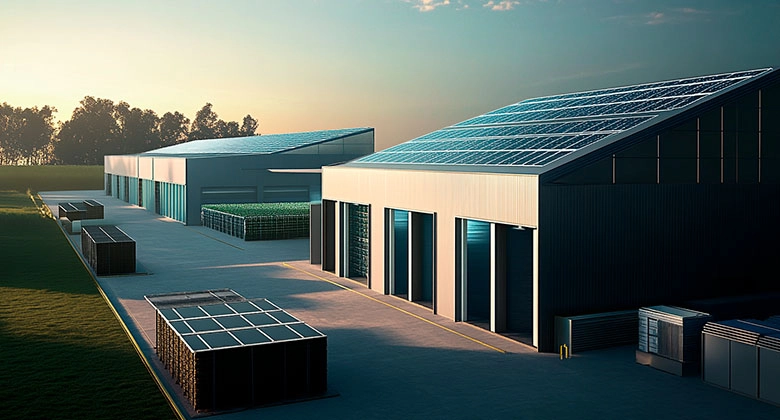

A sustainable future begins with the agropark
With energy costs on the rise, the agricultural sector is increasingly turning to renewable energy sources. Solar power plants are particularly relevant for agroparks — not only do they provide autonomy, but they also pave the way for long-term savings.
Every year, more and more agricultural enterprises invest in their own energy generation. A vivid example is a complex in Poltava, where a low-cost solar power plant in Poltava for agriculture was installed. It covers up to 70% of the annual electricity demand, reduces dependency on price fluctuations, and helps the agropark reach a new level of energy efficiency.
Why agroparks choose solar energy
Agroparks are complex ecosystems where vegetable storage units, drip irrigation systems, farms, greenhouses, and logistics operations all function simultaneously. All of these processes require a stable electricity supply. That’s why solar power stations are especially in demand here:
- Minimal operating costs — after installation, maintenance expenses are very low.
- Reliability — solar panels operate efficiently for 25–30 years.
- Flexible solutions — the station can be launched in phases, expanding capacity as needs grow.
The result is not just savings, but real control over a vital resource.
Strategies that deliver results
Switching to solar energy in agriculture is feasible even with a limited budget. It all depends on the right approach. Take, for instance, an agricultural firm in Zhytomyr, where a 30 kW turnkey solar power plant and price in Zhytomyr pleasantly surprised its owners. They began seeing tangible returns within the first few years of operation.
This installation became a showcase of energy independence. The system powers pumps, lighting, and refrigeration units. And on sunny summer days, it even provides energy for charging equipment.
What to consider before installing
When planning a solar installation for an agropark, consider the following:
- Total annual electricity consumption.
- Availability of open space (rooftops, hangars, land plots).
- Logistics — how the equipment will be connected.
- Regional sunlight exposure — southern Ukraine generally offers higher efficiency.
More and more agricultural enterprises are also exploring the integration of energy storage systems, allowing them to use the electricity at night or on cloudy days.
The key question answered
Agropark owners often ask: which solar power plant to choose — 5, 10, or 30 kW? There’s no universal answer. It depends on the farm's size, goals, and consumption structure. But a well-calculated solution from a specialized company ensures you get the best option — both economically and technologically.
Modern agroparks in Ukraine are transforming from production hubs into pillars of sustainable development. Investing in solar power is investing in freedom, resilience, and a cleaner future.

